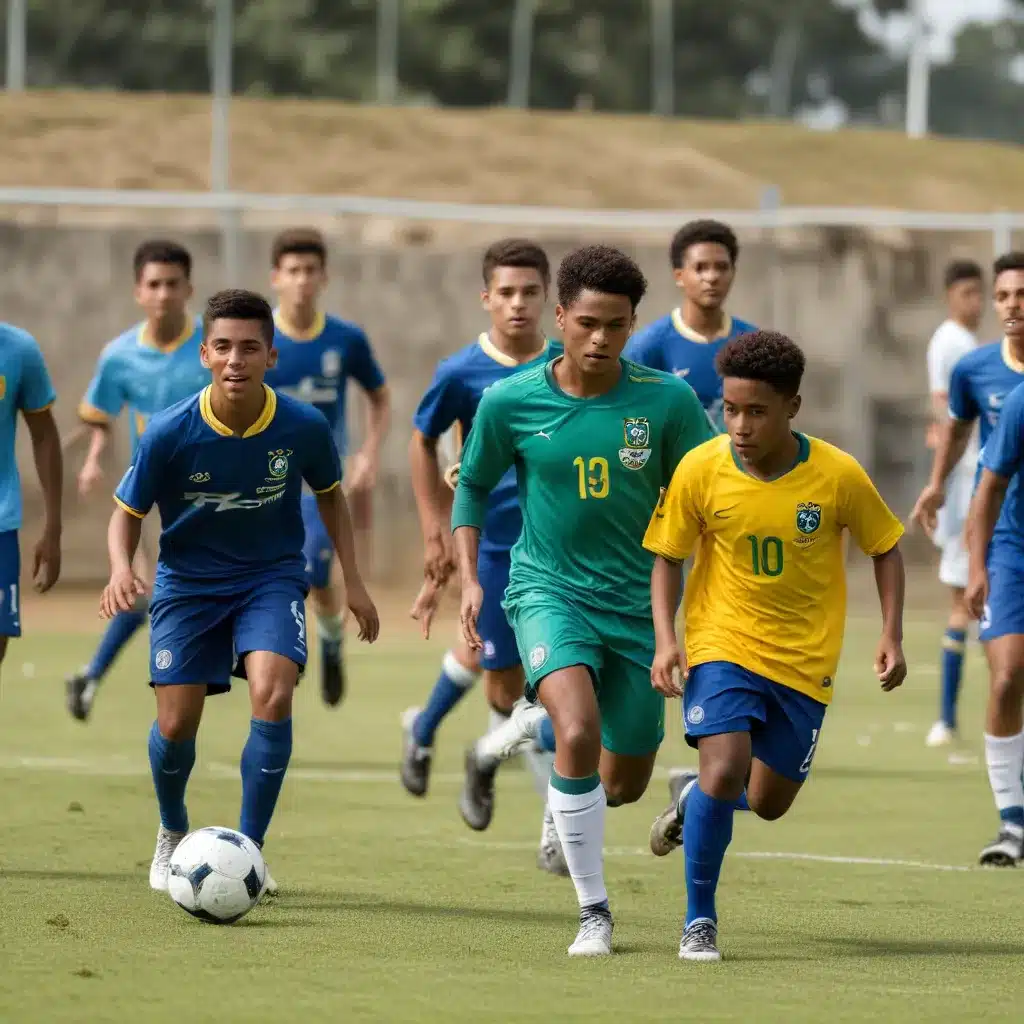
Brazilian Youth Academies: Cultivating the Next Generation
Brazil’s rich football heritage is deeply rooted in its vibrant youth academy system. These grassroots institutions serve as the heartbeat of the sport, unearthing raw talent and nurturing it through meticulous player development programs. From the favelas of Rio to the bustling cities inland, Brazilian academies have consistently produced some of the world’s most iconic footballers.
Talent Identification: Scouting in Brazil is an art form, with club scouts meticulously combing through local communities to uncover the next Ronaldinho or Neymar. Keen eyes assess not just technical ability, but also the intangible qualities – the flair, the creativity, the passion for the game. Academies seek out those with the ginga – the natural Brazilian flair – and the mental fortitude to thrive in the intense environment.
Training Methodology: The academies’ training regimes are the stuff of legend. Young players are immersed in a culture of technical mastery, honing their touch, dribbling, and passing with relentless drills and small-sided games. Coaches emphasize the development of individual skills, allowing players to express themselves on the pitch. This focus on technical excellence, combined with the renowned Brazilian jogo bonito (beautiful game) philosophy, produces players with an innate understanding of the game.
Player Development Pathway: The pathway from academy to professional ranks is a delicate one, with each step meticulously planned. Youngsters progress through age-group teams, facing increasingly challenging opponents and demands. The most promising are fast-tracked into the senior squad, often making their professional debuts in their late teens. This production line has fueled the success of Brazilian clubs on the domestic and continental stage.
Bridging the Opportunity Gap
Despite the success stories, the transition from youth academy to professional football remains a significant hurdle for many young Brazilians. The sheer volume of talent produced often outweighs the opportunities available, creating an opportunity gap that can derail promising careers.
Contract Negotiations: Navigating the complex web of contract negotiations and agent relationships is a daunting task for young players and their families. Academies, often driven by the need to generate revenue, can drive hard bargains, leaving players and their representatives in a precarious position. Striking the right balance between financial security and long-term development is crucial.
Adaptation to the Pro Environment: The jump from the academy’s nurturing environment to the high-stakes, results-driven world of professional football can be overwhelming. Young players must quickly adapt to the increased physical demands, tactical sophistication, and off-field pressures of the senior game. Providing comprehensive support, both on and off the pitch, is essential for their successful transition.
Bridging Strategies: Closing the Opportunity Gap
To address these challenges, Brazilian clubs and governing bodies are implementing innovative strategies to strengthen the pathway from youth academies to the professional ranks.
Talent Retention Programs: Academies are recognizing the need to retain their brightest prospects, offering tailored development plans and mentorship initiatives to guide players through the transition. This holistic approach, combined with improved contract terms, helps to ensure that the best talent remains within the domestic system.
Regulatory Frameworks: Governing bodies, such as the Brazilian Football Confederation (CBF), are introducing regulatory frameworks to protect young players’ interests and ensure a fair playing field. These include standardized contract terms, mandatory educational support, and clear guidelines for agent involvement.
International Exposure: Providing young players with opportunities to compete against the best abroad has become a crucial part of their development. Participation in prestigious youth tournaments and training stints with European clubs expose them to different playing styles and help accelerate their growth.
Pathways to Success: Showcasing the Transition Model
The journey from Brazilian youth academy to professional stardom is not without its challenges, but the success stories serve as beacons of inspiration. These players have navigated the pathway and emerged as legends, inspiring the next generation.
Notable Academy Graduates: Names like Pelé, Ronaldo, Kaká, and Marta have become synonymous with Brazilian football, their meteoric rise fueled by the foundations laid in youth academies. These icons have not only dominated the domestic scene but also left an indelible mark on the global stage.
Transition Milestones: The transition to professional football is marked by key milestones – the first-team debut, the maiden goal, the international call-up. These moments serve as proof that the pathway can be navigated successfully, inspiring young players to follow in their footsteps.
Career Trajectories: While not every academy graduate reaches the dizzying heights of global superstardom, many have forged successful professional careers, both within Brazil and abroad. These stories showcase the resilience, determination, and adaptability required to thrive in the cutthroat world of professional football.
Ecosystem Stakeholders: Uniting for a Stronger Future
The success of the Brazilian football pathway relies on the collective efforts of various stakeholders, each playing a crucial role in the development and progression of young talents.
Governing Bodies: The Brazilian Football Confederation (CBF) and the professional league organizations, such as the Campeonato Brasileiro Série A, are responsible for setting the strategic vision, implementing policies, and fostering a nurturing environment for youth development.
Grassroots Initiatives: Community-driven programs, scholarship schemes, and coaching education initiatives play a vital role in reaching underserved areas and ensuring that the passion for the game is nurtured from the grassroots level. These efforts help to expand the talent pool and provide opportunities for underprivileged youth.
Club Academies: At the heart of the ecosystem are the youth academies themselves, the incubators of Brazil’s footballing talent. These institutions must continue to innovate, refine their scouting and development methods, and forge strong partnerships with other stakeholders to maintain their position as global leaders in talent production.
By uniting these diverse elements of the Brazilian football ecosystem, the pathway from youth academies to professional stardom can be strengthened, ensuring that the next generation of Pelés and Neymars can realize their full potential and inspire the world with their flair and brilliance.

